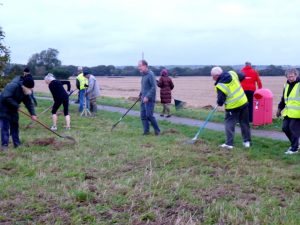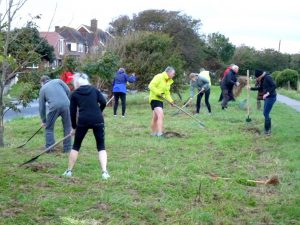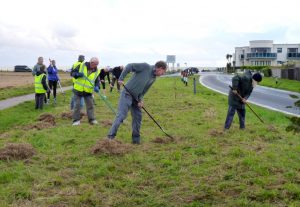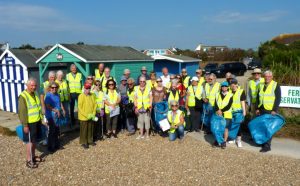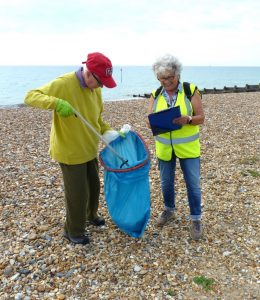On a relatively mild, but damp morning nine members of Ferring Conservation Group met up on the Village Green to admire and learn more about the many beautiful trees in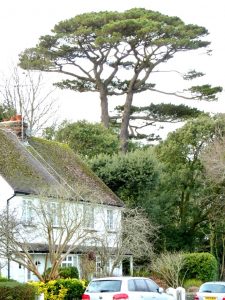 the village. The walk not only coincided with the wonderful display of autumnal colours at this time of year but also with National Tree Week. This is the UK’s largest annual tree celebration when people across the country are encouraged to plant thousands of trees to mark the start of the winter tree planting season.
the village. The walk not only coincided with the wonderful display of autumnal colours at this time of year but also with National Tree Week. This is the UK’s largest annual tree celebration when people across the country are encouraged to plant thousands of trees to mark the start of the winter tree planting season.
The Group’s knowledgeable guide for the day was Tricia Hall who handed members a list of trees to identify as part of an ‘Eleven Tree Winter Challenge’. After admiring the vivid red of a nearby Dogwood shrub the group’s first stop was a Horse Chestnut tree recognised by the brown sticky buds and large palmate leaves.
At the next stop there were no acorns to give up a clue, but the distinctive shaped leaves of the Oak quickly gave the game away. When a nut-bearing tree like the Oak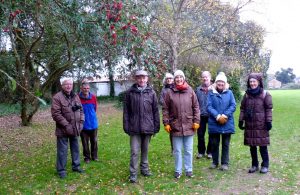 produces a high yield of acorns the year is referred to as a ‘mast’ year. The theory is that this behaviour is ‘predator satiation’ as squirrels, jays, mice and badgers feed on the acorns and when smaller crops are produced for a few consecutive years, they are helping to keep the populations of these animals in check. The abundant year will promote the chances of the tree surviving as the glut of acorns will ensure that at least some will survive and grow into new trees.
produces a high yield of acorns the year is referred to as a ‘mast’ year. The theory is that this behaviour is ‘predator satiation’ as squirrels, jays, mice and badgers feed on the acorns and when smaller crops are produced for a few consecutive years, they are helping to keep the populations of these animals in check. The abundant year will promote the chances of the tree surviving as the glut of acorns will ensure that at least some will survive and grow into new trees.
Moving away from the Village Green and heading down Ferring Street, the Group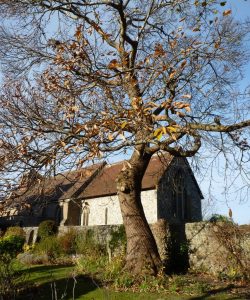 passed the bright green leaves scattered on the ground under a Common Lime Tree – as for many trees the leaves had been stripped from its branches by Storm Arwen.
passed the bright green leaves scattered on the ground under a Common Lime Tree – as for many trees the leaves had been stripped from its branches by Storm Arwen.
As the Group turned into the entrance of Little Twitten they could see ahead of them the striking white bark of two mature Silver Birch with elegant drooping branches – these trees are attractive at all times of the year. By the side of the path a well-shaped young Field Maple could be seen that had been planted several years ago by the Group in memory of its founder member, Joyce Cooper. A well-formed Sweet Chestnut was thriving, more so than others planted along the Rife that suffer competition from other trees. Tricia pointed out the lichen that had grown on many trunks and branches and this is a welcome sign of clean air. A sapling Oak Tree was spotted with a few oak apples hanging from its branches. Tricia explained that although many people believe these are the fruit of the tree they are in fact formed when chemicals are injected by the larva of certain kinds of Gall Wasps. At the eastern end of Little Twitten, in the centre of a copse of trees, a magnificent Monterey Pine stands proud. It is the tallest tree in the area and believed to be around 150 years old. This remarkable tree which can also be spotted from Highdown Hill has distinctive needles in groups of three, unlike the Scots Pine which are in two. Its bark is very attractive to unusual birds like Tree Creepers who have been seen on the Plantation in Goring.
Retracing their steps the Group had their last stop in Grange Gardens where a striking Sweet Chestnut graced the front lawn in front of Phoenix House. The spiral bark is another interesting feature of this native tree. Jane Hayman from the Group commented that ‘all the trees on Tricia’s list were located on the walk and much had been learned along the way’. Most of the members gratefully partook of a hot drink in Kingsley’s Coffee Shop to warm up after a most enjoyable morning.

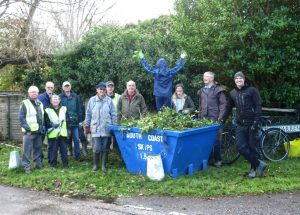
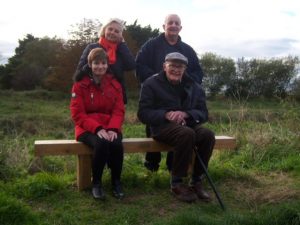
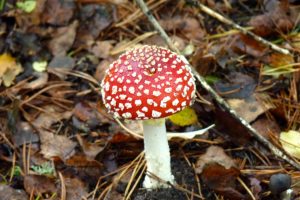
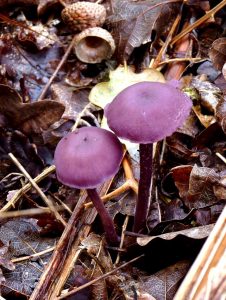
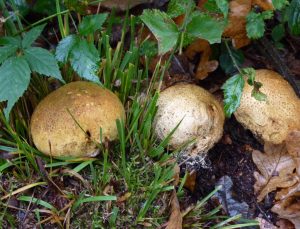
 Please note that our next Group monthly meeting commences at 2.30pm (not 7.30 pm as stated on the poster) Friday 29th October in Ferring Village Hall
Please note that our next Group monthly meeting commences at 2.30pm (not 7.30 pm as stated on the poster) Friday 29th October in Ferring Village Hall